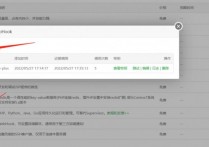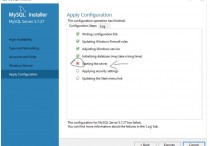用于查找子列表总和的 Python 程序

在本文中,我们将学习一个 python 程序来查找子列表的总和。
使用的方法
以下是完成此任务的各种方法 -
使用 For 循环(暴力代码)
使用累积和法
使用 sum() 函数
使用 math.fsum() 函数
使用 For 循环(暴力代码)
算法(步骤)
以下是执行所需任务要遵循的算法/步骤。−
创建一个变量来存储输入列表。
创建两个单独的变量来存储开始索引和结束索引。
将变量 resultSum 初始化为 0,以存储子列表的结果总和。
使用 for 循环遍历从给定开始索引到结束索引的范围。
将迭代器索引处的相应值添加到上面定义的 resultSum 变量(给定开始和结束索引中的元素总和)
打印子列表的结果总和(从开始到结束索引)。
例
以下程序返回子列表的总和,即使用 for 循环返回给定开始和结束索引的元素总和 −
# input list inputList = [3, 5, 10, 5, 2, 3, 1, 20] print("The Given List is:", inputList) # starting index start_index = 1 # ending index end_index = 5 # initializing a variable to 0 for storing the resultant sublist sum resultSum = 0 # traversing in the range from the given start index to the end index for k in range(start_index, end_index+1): # adding corresponding value at the iterator index to the resultSum variable resultSum += inputList[k] # Printing the resultant sum of sublist(from start to end index) print("The resultant sum of sublist is:", resultSum)输出
在执行时,上述程序将生成以下输出 -
The Given List is: [3, 5, 10, 5, 2, 3, 1, 20] The resultant sum of sublist is: 25
使用累积和法
使用累积总和方法将前面的元素值添加到当前索引值中。
算法(步骤)
以下是执行所需任务要遵循的算法/步骤。−
使用 for 循环,使用 len() 函数循环直到输入列表的长度(返回对象中的项数)。
如果当前索引为 0,则上一个索引处将没有元素,因此请使用 continue 语句继续迭代。
否则将前一个元素的值添加到当前元素(累计总和)。
使用 if 条件语句检查给定的起始索引是否为 0。
在输入列表的给定结束索引处打印元素,如果上述 if 条件为真。
否则打印给定结束索引处的元素与开始索引的前一个元素的差异。
例
以下程序返回子列表的总和,即使用累积和方法返回给定开始和结束索引的元素总和 -
# input list inputList = [3, 5, 10, 5, 2, 3, 1, 20] print("The Given List is:", inputList) # starting index start_index = 1 # ending index end_index = 5 # looping till the length of the input list for k in range(len(inputList)): # If it the index is 0 i.e first element then continue(do nothing) if(k == 0): continue else: # Else add the previous element value to the current element inputList[k] = inputList[k]+inputList[k-1] print("The resultant sum of sublist is:") # checking whether the given starting index is 0 if(start_index == 0): # printing the element at the given end index of the list print(inputList[end_index]) else: # Else printing the difference of elements at the given end index # and previous of start index print(inputList[end_index]-inputList[start_index-1])输出
The Given List is: [3, 5, 10, 5, 2, 3, 1, 20] The resultant sum of sublist is: 25
使用 sum() 函数
算法(步骤)
以下是执行所需任务要遵循的算法/步骤。−
使用切片从开始索引获取从开始索引到结束索引的列表元素。
使用 sum() 函数(返回任何可迭代对象中所有项目的总和)打印子列表的总和,即从给定的开始索引到结束索引的元素总和。
例
以下程序返回子列表的总和,即使用 sum() 函数 − 返回给定开始和结束索引中的元素总和
# input list inputList = [3, 5, 10, 5, 2, 3, 1, 20] print("The Given List is:", inputList) start_index = 1 end_index = 5 print("The resultant sum of sublist is:") # Getting the list elements between start and end indices resultList = inputList[start_index:end_index+1] # Printing the sum of the sublist i.e printing above resultList sum print(sum(resultList))输出
The Given List is: [3, 5, 10, 5, 2, 3, 1, 20] The resultant sum of sublist is: 25
使用 math.fsum() 函数
fsum() 是数学模块中的特殊函数之一。然后可以使用 fsum() 函数计算子列表的总和。
python中的math.fsum()函数返回任何可迭代对象(如元组,数组,列表等)中所有项目的总和。
例
以下程序返回子列表的总和,即使用 math.fsum() 函数从给定的开始和结束索引中元素的总和 −
# importing math module import math # input list inputList = [3, 5, 10, 5, 2, 3, 1, 20] # starting index start_index = 1 # ending index end_index = 5 print("The Given List is: [3, 5, 10, 5, 2, 3, 1, 20]") print("The resultant sum of sublist is:") # Getting the list elements between start and end indices resultList = inputList[start_index:end_index+1] # Printing the sum of the sublist i.e printing above resultList sum print(math.fsum(resultList))输出
The Given List is: [3, 5, 10, 5, 2, 3, 1, 20] The resultant sum of sublist is: 25.0
结论
在本文中,我们学习了如何使用四种不同的方法查找子列表的总和,即给定的开始和结束索引之间的总和。我们还学习了如何使用切片来获取列表的一部分。
本站发布的内容若侵犯到您的权益,请邮件联系站长删除,我们将及时处理!
从您进入本站开始,已表示您已同意接受本站【免责声明】中的一切条款!
本站大部分下载资源收集于网络,不保证其完整性以及安全性,请下载后自行研究。
本站资源仅供学习和交流使用,版权归原作者所有,请勿商业运营、违法使用和传播!请在下载后24小时之内自觉删除。
若作商业用途,请购买正版,由于未及时购买和付费发生的侵权行为,使用者自行承担,概与本站无关。












